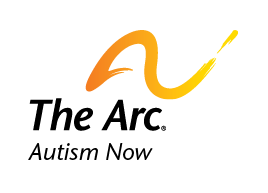Arts-based Interventions for Persons with Autism Spectrum Disorder
Contents
- Introduction
- Strategies used in SENSE Theatre
- What is SDARI?
- Research gaps identified by Simpson and Keen (2011)
- References
Introduction
Arts-based interventions may be particularly effective for individuals with autism spectrum disorders (ASD). Several studies published in 2011 looked at the effects of theater- and music-based interventions. This brief focuses on four of these articles.
Music-based interventions have been used often with people who have ASD. This is because research shows that people with ASD often have musical understanding and ability (Quintin et al. 2011). Simpson and Keen looked at several music-based interventions. They found that music interventions have been used to help socialization, communication, and behavior among children with ASD. Music interventions have shown some success. This success depends on how it is done, who it is done with, and what exactly is done.
Quintin et al. (2011) used music interventions to see how well teens could identify emotions in music. They focused on 26 teens with ASD and 26 without ASD. Teens with ASD scored slightly lower than typically developing (TD) adolescents. However, these differences disappeared when the researchers considered the adolescent’s verbal ability. Emotions that were easier for teens without ASD were also easier for teens with ASD to identify. This means that recognizing emotions in music is a relative strength for teens with ASD. This is important to know when programs are designed.
Theater-based interventions may also help individuals with ASD. Theater-based programs may help develop social skills, through learning and mimicking behaviors. Corbett et al. (2011) used the Social Emotional NeuroScience Endocrinology (SENSE) Theatre intervention with children between the ages of 6 and 17. Eight of the children had ASD and eight did not. This program was developed to improve socio-emotional function and reduce stress for children with ASD. It uses a number of strategies that might be good to use in other situations. This program helped children with ASD recognize faces, increase theory of mind skills, understand social situations, and lowered stress. In addition, it helped students without ASD be more accepting of children with ASD.
Strategies used in SENSE Theatre
- Pairing with typically developing peer
- Modeling
- Nurturing
- Fun
- Natural reinforcement
- Multiple trainers
- Video modeling
- Music
(Corbett et al. 2011)
Lerner, Mikami, and Levine (2011) used the Socio-Dramatic Affective-Relational Intervention (SDARI) with 17 youths with Asperger Syndrome or High-functioning Autism.
What is SDARI?
- Performance-based social skills curriculum that uses adapted improvisation games and dramatic training
- Focus on child-child and child-staff relationships
- Age-appropriate motivators (i.e. video games or physical activity)
(Lerner, Mikami, & Levine 2011)
Young people in a six-week summer program participated for five hours each day. First-time participants showed improvement in social situations and in detecting emotions in adult voices. These positive changes lasted at least six weeks after the end of the program.
In their review of studies of music-based interventions, Simpson and Keen (2011) found several limitations in the existing research, many of which apply to other studies on arts-based interventions. These issues should be considered in understanding findings and designing future studies.
Research gaps identified by Simpson and Keen (2011)
- Applying successful outcomes to other situations
- Following up over time to see if successful outcomes last
- Larger samples.
- Inclusion of adolescents and adults
(Simpson & Keen 2011)
References
- Simpson, Kate and Deb Keen. 2011. Music Interventions for Children with Autism: Narrative Review of the Literature. Journal of Autism and Developmental Disorders 41: 1507-1514.
- Lerner, Matthew, Amori Yee Mikami, and Karen Levine. 2011. Socio-Dramatic Affective-Relational Intervention for Adolescents with Asperger Syndrome & High Functioning Autism: Pilot Study. Autism 15(1): 21-42.
- Corbett, Blythe, Joan Gunther, Dan Comins, Jenifer Price, Niles Ryan, David Simon, Clayton Schupp, and Taylor Rios. 2011. Brief Report: Theatre as Therapy for Children with Autism Spectrum Disorder. Journal of Autism and Developmental Disorders 41: 505-511.
- Quintin, Eve-Marie, Anjali Bhatara, Helene Poissant, Eric Fombonne, Daniel Levitin. 2011. Emotion Perception in Music in High-Functioning Adolescents with Autism Spectrum Disorders. Journal of Autism and Developmental Disorders 41: 1240-1255.

